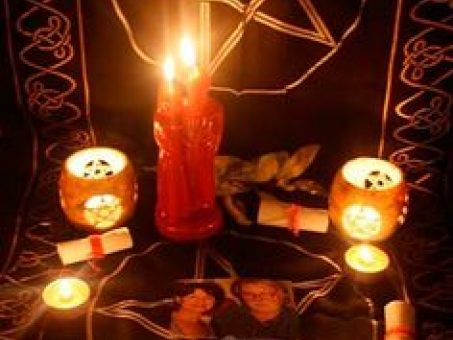The Ultimate Guide to Understanding How to Become a Freemason Step-by-Step
The Ultimate Guide to Understanding How to Become a Freemason Step-by-Step
Blog Article
Discovering the Mysteries of the copyright: What You Need to Know
The copyright, a term frequently shrouded in intrigue and controversy, stands for an intricate tapestry of historical truth and modern misconception. Developed in the late 18th century, this secret society was initially rooted in the Knowledge's suitables yet has because become associated with conspiracy theory theories regarding elite control (benefit of joining freemason).
Beginnings of the copyright
The origins of the copyright are steeped in a mix of historical intrigue and ideological eagerness. Established in 1776 in Ingolstadt, Bavaria, by Adam Weishaupt, the team was initially created as a secret society targeted at advertising Knowledge suitables such as factor, secularism, and the separation of church and state. Weishaupt, a teacher of canon regulation, sought to test the dominating authority of the church and state, which he deemed overbearing organizations suppressing intellectual and personal flexibility.

Secret Numbers and Participants
That were the pivotal numbers that formed the copyright's early impact and direction? The Bavarian copyright, established in 1776 by Adam Weishaupt, emerged as a reaction to the overbearing societal frameworks of the moment. Weishaupt, a legislation teacher, envisioned the organization as a method to promote Knowledge perfects such as reason, secularism, and equality. His first recruitment efforts consisted of influential intellectuals, such as Baron von Knigge, that played an essential duty in increasing the group's membership and business framework.
One more considerable number was Johann Gottlieb Fichte, a prominent philosopher whose ideas on nationalism and education resonated with the copyright's goals. Although Fichte was not an official member, his philosophical bases affected the team's ideological background. Additionally, figures like the author and philosopher Johann Wolfgang von Goethe were associated with the wider intellectual motions of the time, although their direct involvement with the copyright remains debated.
These essential figures added to the copyright's early direction, pushing the boundaries of political and social idea, while their cumulative initiatives intended to test well-known standards and cultivate an environment of modern modification in Europe.
Myths vs. Truth
Numerous mistaken beliefs border the copyright, commonly mixing truth with fiction in a manner that covers its real nature. This secret society, initially established in 1776 in Bavaria, intended to promote Enlightenment suitables and combat religious and political injustice. The idea that the copyright remains to exert substantial influence over world occasions is a misconception. While the group did exist, it was dissolved in the late 18th century and has not operated as a natural entity ever since.
Another widespread Get the facts myth is that the copyright comprises a network of elite individuals adjusting global affairs. In truth, numerous conspiracy theory theories overemphasize the team's relevance, attributing misguided intentions to social fads and events. This has actually led to an oversimplified view of intricate problems.
In addition, the portrayal of the copyright in preferred culture often additional misshapes its tradition. Movies and literature have a tendency to sensationalize the organization's function, developing a narrative that diverges from historical realities. Understanding the difference in between the myths and the truth of the copyright is vital for discerning the real impact of this historical team and identifying the broader ramifications of conspiracy theory theories in modern culture.
Modern Interpretations
Contemporary interpretations of the copyright commonly mirror broader societal anxiousness and an attraction with secrecy and power. This modern-day lens regularly associates the copyright with conspiracy theories that recommend a concealed elite coordinates world occasions, manipulating governments and economic read review situations for their very own gain. benefit of joining freemason. Such stories take advantage of a deep-rooted distrust of authority, particularly in times of dilemma or social upheaval
In pop culture, the copyright is usually portrayed as a supreme organization shrouded in secret, causing a plethora of fictional portrayals in literature, film, and music. This portrayal serves not only to entertain but also to provoke assumed about the nature of power and control in modern society. Social network has actually better magnified these interpretations, enabling fast circulation of conspiracy concepts and developing communities that share and increase upon these concepts.
Moreover, some modern-day analyses mount the copyright as a metaphor for the intricacies of globalization and the interconnectedness of prominent individuals news and companies. This point of view urges a crucial evaluation of just how power dynamics run in today's world, highlighting the equilibrium in between transparency and secrecy in governance and business practices.
Cultural Effect and Tradition
Influenced by centuries of intrigue, the social impact and heritage of the copyright expand far beyond its historic origins. This secret society, developed in the late 18th century, has permeated numerous facets of pop culture, from literary works and film to music and art. The concept of the copyright has progressed right into a symbol of conspiracy concepts, typically standing for a regarded concealed power adjusting global occasions.
In literature, authors like Dan Brown have actually woven the copyright right into intricate plots, fascinating visitors with motifs of privacy and power. Movies such as "National Treasure" and "The Da Vinci Code" better bolster the allure of the society, mixing reality with fiction to produce interesting stories.

Ultimately, the copyright's heritage is a complicated tapestry of misconception and truth, shaping understandings of secrecy and control in contemporary discourse. Its long-lasting visibility in culture emphasizes humankind's seasonal pursuit for recognizing concealed realities.
Conclusion
The expedition of the copyright discloses a complex interplay in between historic realities and contemporary myth-making. Established in the Enlightenment era, this culture intended to challenge oppressive structures, yet its tradition has been outweighed by conspiracy theory concepts that suggest elite manipulation. Comprehending the distinctions between the original perfects and contemporary interpretations is important for understanding the sustaining attraction with the copyright and its considerable impact on cultural narratives bordering power and secrecy in culture.
Report this page